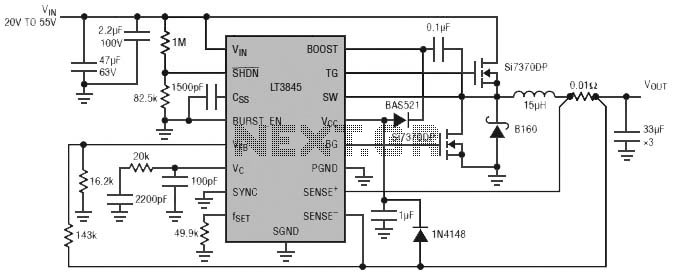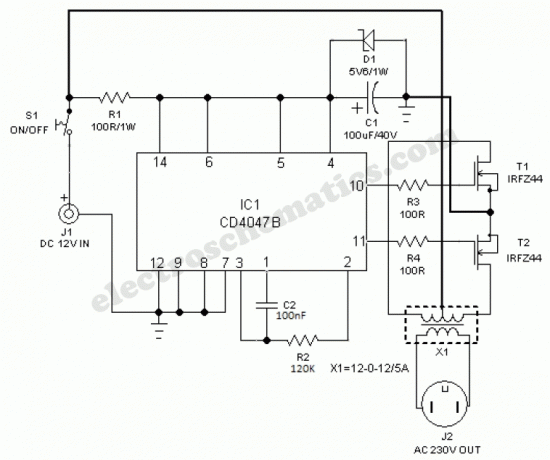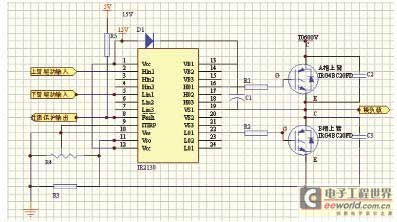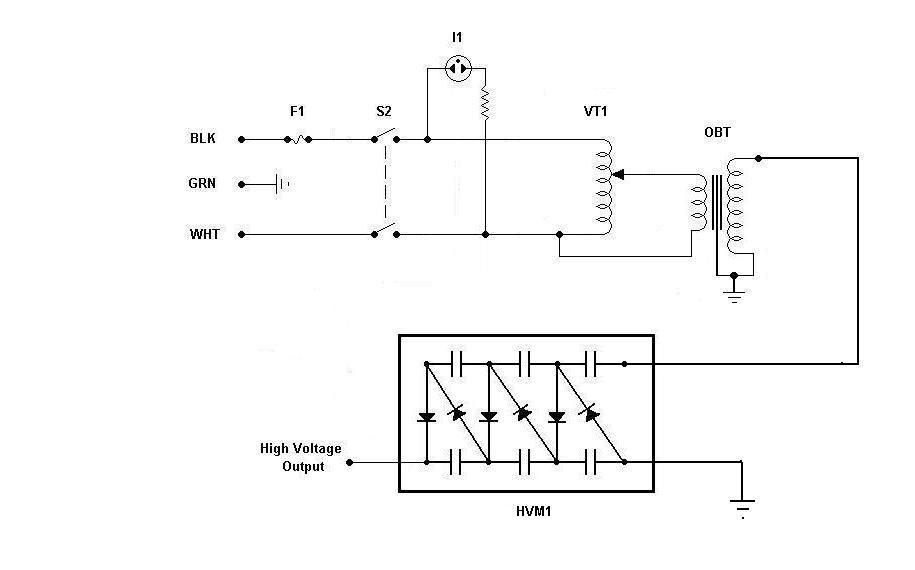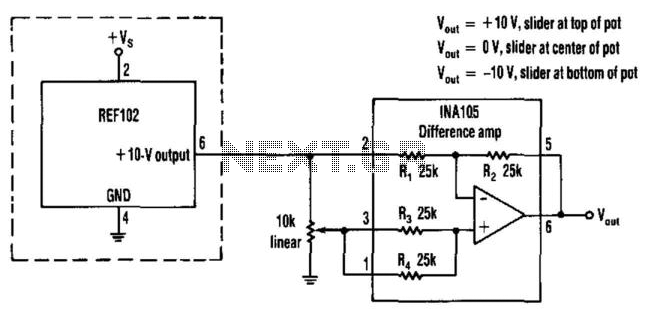
Uninterruptible Power Supply (UPS) Schematic
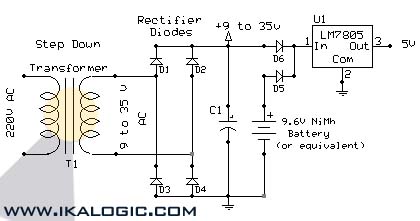
This circuit supplies electric power from a backup battery when AC power is interrupted, ensuring a stable 5V power supply for sensitive devices such as microcontrollers and logic circuits. The capacitor C1 should have a capacitance greater than 220 µF; a higher capacitance allows for greater power delivery to the circuits. The 9.6V NiMH battery can be substituted with any equivalent battery that has a voltage exceeding 7.5V. A charger can remain connected to the battery from the same 220V source as the rest of the circuit, although this may reduce the battery's lifespan depending on the battery and charger specifications. To facilitate a seamless transition from AC to battery operation, particularly with microcontrollers, it is advisable to use 10nF decoupling capacitors (ceramic capacitors) placed as close as possible to the relevant integrated circuit (IC).
The circuit operates by utilizing a backup battery to maintain power supply during AC outages, which is crucial for sensitive electronic components that require a stable voltage. The core of this design is the voltage regulation and power management system that ensures a continuous 5V output. The capacitor C1 plays a vital role in smoothing out voltage fluctuations and providing additional current when needed, thus enhancing the circuit's reliability.
When selecting the capacitor, it is important to consider the Equivalent Series Resistance (ESR) as well, as a lower ESR will improve performance in high-frequency applications. The choice of a 9.6V NiMH battery is beneficial due to its ability to provide a stable voltage and sufficient current for the load. However, caution must be exercised when connecting a charger, as prolonged charging can lead to overheating and reduced battery life.
The integration of decoupling capacitors is essential for noise reduction and stability in microcontroller applications. Placing these capacitors close to the IC minimizes the effect of parasitic inductance and resistance in the PCB traces, ensuring that the microcontroller receives a clean power supply. Additionally, it is advisable to implement a diode or a similar component to prevent backflow of current from the battery to the AC supply, thereby protecting the circuit from potential damage.
In summary, this circuit design emphasizes the importance of reliable power delivery for sensitive electronics, with careful consideration given to component selection and layout to ensure optimal performance and longevity.This circuit will provide electric power from a backup battery when AC power is cut, always providing a clean 5V power supply for sensitive equipment like microcontrollers and logic circuits. The value of C1 is to be higher than 220 µF. The bigger the capacitance of this capacitor, the more power you can deliver to your circuits. The 9. 6 V NiMh Ba ttery can be replaced with any equivalent battery whose voltage is more than 7. 5V. A charger can be constantly connected to the battery from the same 220V source as the rest of the circuit, but depending on the battery and charger type, this procedure can shorten its life. For a clean transition from AC to Battery operation, especially with microcontrollers, use 10nF decoupling capacitors (ceramic capacitors) as near as possible from the concerned IC.
🔗 External reference
The circuit operates by utilizing a backup battery to maintain power supply during AC outages, which is crucial for sensitive electronic components that require a stable voltage. The core of this design is the voltage regulation and power management system that ensures a continuous 5V output. The capacitor C1 plays a vital role in smoothing out voltage fluctuations and providing additional current when needed, thus enhancing the circuit's reliability.
When selecting the capacitor, it is important to consider the Equivalent Series Resistance (ESR) as well, as a lower ESR will improve performance in high-frequency applications. The choice of a 9.6V NiMH battery is beneficial due to its ability to provide a stable voltage and sufficient current for the load. However, caution must be exercised when connecting a charger, as prolonged charging can lead to overheating and reduced battery life.
The integration of decoupling capacitors is essential for noise reduction and stability in microcontroller applications. Placing these capacitors close to the IC minimizes the effect of parasitic inductance and resistance in the PCB traces, ensuring that the microcontroller receives a clean power supply. Additionally, it is advisable to implement a diode or a similar component to prevent backflow of current from the battery to the AC supply, thereby protecting the circuit from potential damage.
In summary, this circuit design emphasizes the importance of reliable power delivery for sensitive electronics, with careful consideration given to component selection and layout to ensure optimal performance and longevity.This circuit will provide electric power from a backup battery when AC power is cut, always providing a clean 5V power supply for sensitive equipment like microcontrollers and logic circuits. The value of C1 is to be higher than 220 µF. The bigger the capacitance of this capacitor, the more power you can deliver to your circuits. The 9. 6 V NiMh Ba ttery can be replaced with any equivalent battery whose voltage is more than 7. 5V. A charger can be constantly connected to the battery from the same 220V source as the rest of the circuit, but depending on the battery and charger type, this procedure can shorten its life. For a clean transition from AC to Battery operation, especially with microcontrollers, use 10nF decoupling capacitors (ceramic capacitors) as near as possible from the concerned IC.
🔗 External reference
